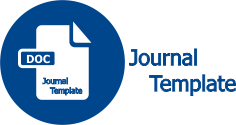Pengembangan Perangkat Pembelajaran Menggunakan Schoology dalam Model Pembelajaran Berbasis Masalah untuk Meningkatkan Motivasi Belajar Peserta Didik
(1) Universitas Negeri Makassar
(2) Universitas Negeri Makassar
(3) Universitas Negeri Makassar
(*) Corresponding Author
DOI: https://doi.org/10.26858/cer.v3i1.11743
Abstract
Keywords
Full Text:
PDFReferences
Aminoto, Tugiyo, & Pathoni, H. 2014. Penerapan Media E-Learning Berbasis Schoology Untuk Meningkatkan Aktivitas dan Hasil Belajar Materi Usaha dan Energi Di Kelas XI SMA N 10 Kota Jambi. Jurnal Sainmatika, 8(1), 13-29.
Astuti, S., Danial, M., & Anwar, M. 2018. Pengembangan LKPD Berbasis PBL (Problem Based Learning) untuk Meningkatkan Keterampilan Berpikir Kritis Peserta Didik pada Materi Kesetimbangan Kimia. Jurnal Chemistry Education Review, 1(2), 90-114.
Dina, Agus, Setiabudi, & Nahadi. 2015. Pembelajaran Berbasis Masalah untuk Meningkatkan Keterampilan Berargumentasi Siswa SMA pada Konsep Hidrolisis Garam. Jurnal Pendidikan Matematika dan Sains, 2.
Djamarah, Syaiful Bahri. 2008. Psikologi Belajar. Jakarta: Rineka Cipta.
Efendi, Agus. 2017. E-Learning Berbasis Schoology dan Edmodo: Ditinjau dari Motivasi dan Hasil Belajar Siswa SMK. Elinvo (Electronics, Informatics, and Vocational Education), 2(1), 49-58.
Faizah, Asmaul, & Munoto. 2016. Pengembangan Perangkat Pembelajaran Mata Pelajaran Teknik Elektronika Dasar Menggunakan Learning Management System (LMS) Schoology di SMK Negeri 2 Surabaya. Jurnal Pendidikan Teknik Elektro, 5(3), 697-704.
Kementerian Pendidikan dan Kebudayaan. 2013. Peraturan Menteri Pendidikan dan Kebudayaan Nomor 65 Tahun 2013 Tentang Standar Proses Pendidikan Dasar dan Menengah. Jakarta: Badan Standar Nasional Pendidikan.
Khotim, H. N. 2015. Pengembangan Modul Kimia Berbasis Masalah Pada Materi Asam Basa. Jurnal Chemistry in Education, Universitas Negeri Semarang.
McCombs, B. L. 1996. Understanding The Keys to Motivation to Learn. What’s Noteworthy on Learners, Learning, Schooling. Mid-Continent Regional Educational Lab, Aurora, 8.
Purwanto, R., & Rina, H. 2017. Pengembangan Problem Based Learning dengan Schoology pada Kompetensi Dasar Menganalisis Kebutuhan Server untuk Lalu Lintas dan Aplikasi Jaringan Kelas XI-TKJ di SMK Negeri 1 Pungging Mojokerto. Jurnal IT-Edu, 2(1), 85-91.
Risma, Ramlawati, & Anwar, M. 2015. Pengembangan Perangkat Pembelajaran Berbantuan Web untuk Menumbuhkan Multiple Representasi Peserta Didik, http://eprints.unm.ac.id/8076/, Diakses tanggal 4 Februari 2019).
Tegeh, I. M., Jampel, I. N., & Pudjawan, K. 2014. Model Penelitian Pengembangan. Yogyakarta: Graha Ilmu.
Uno, H. B. 2008. Teori Motivasi dan Pengukurannya. Jakarta: Bumi Aksara.
Widiantoro, B., & Rakhmawati. L. 2015. Pengembangan Media Pembelajaran E-Learning Berbasis Schoology pada Kompetensi Dasar Memahami Model Atom Bahan Semikonduktor Di SMKN Negeri 1 Jetis Mojokerto. Jurnal Pendidikan Teknik Elektro, 4(2), 501-506.
Article Metrics
Abstract view : 261 times | PDF view : 88 timesRefbacks
- There are currently no refbacks.
Jurnal dipublikasikan oleh: Program Studi Pendidikan Kimia
Program Pascasarjana Universitas Negeri Makassar
Alamat JL. Bonto Langkasa Gunung Sari Makassar, 90222
Kampus PPs UNM Makassar Gedung AD ruang 406 Lt 4, Indonesia.Phone 082393643737/085145825311/085242228678
CER UNM Indexed by:

Chemistry Education Review (CER) is licensed under a Creative Commons Attribution-NonCommercial 4.0 International License.










